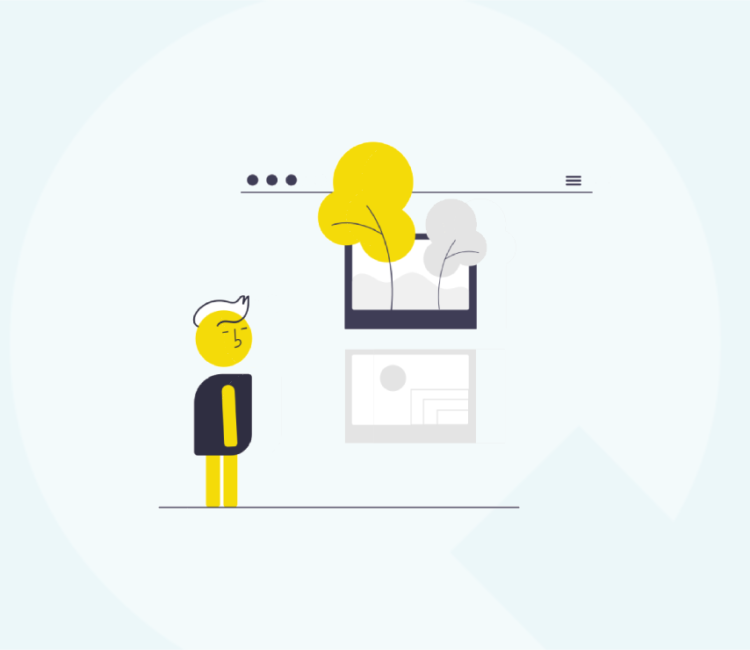Employee engagement is necessary to build gratifying work environments. A kind workplace goes a long way in relieving work-related stress and increasing employees’ physical and mental health.
Mental health has been at the forefront of topics in the world today. People are cooped up at home, blurring those lines between work and life. They yearn for their water cooler chats, smoke breaks, and long work lunches.
People knew when to clock out and not to bring their work home to the family. But now, there aren’t clear operating guidelines or schedules with the overlap of home and the workplace.
This imbalance in work-life balance can contribute to anxiety and just a searing sense of loss of control.
But is this just a side effect of COVID-19?
NO. Social anxiety and depression have been common in workplaces long before that. They say keeping busy and working just enough can keep this concern at bay.
But what happens when a negative work environment itself is the cause of such distress.
What the numbers say
The 2019 Workplace Health Survey by Mental Health America found that 85% of those surveyed agreed that they felt safer to remain silent about workplace stress. Incidentally, these employees also tested the lowest levels of employee engagement and collective well being.
Workplaces previously tended to display overt forms of harassment – physically and mentally. There is evidence of less dramatic forms of bullying and harassment with the introduction of strong workplace guidelines and HR policies in recent years. Some subtle ways of bullying still exist, and these can include but are not limited to the below:

- Intruding privacy;
- Constant undermining by belittling opinions;
- Passing off comments as jokes;
- Stealing credit ;
- Setting up impossible deadlines in the name of mentorship;
- Excluding a co-worker socially;
- Spreading rumours about a co-worker, and;
- Denying permissions for leave or training.
This list isn’t in any way exhaustive. But it leads us to think about how many times we have seen these activities in our workplaces.
The WHO estimates that the economic impact of depression and anxiety can be close to US$ 1 trillion per year in lost productivity. The health impact on the individual is debilitating. Most mental health issues manifest in physical comorbidities like heart disease, diabetes, and other disorders.
Workplaces, in conjunction with health experts, have recommended a host of guidelines and policies to reduce stress and uncertainty and thereby step up employee engagement. Many organisations have long concept notes on how they will promote well being and foster a culture of flexibility. But what are we still missing? Why isn’t the data showing sustainable changes?
Building a culture in the workplace doesn’t solely rest on the shoulders of the employer. Culture is a shared set of beliefs translating into social behaviour, traditions, and approaches. Many modern classrooms focus on getting the culture set before jumping in to provide an excellent education.
The same applies to an environment of adults as well. What sort of culture do you bring to your workplace?
“Kindness begins with the understanding that we all struggle.” – Charles Glassman
How value can change the setting
Transitioning in a new environment takes up a significant amount of time. We pick up social cues from co-workers on how to talk and behave as a means of learning. So what happens when we actively produce a culture setting model without making it a mandated training session?
- Small acts of politeness, greeting people with a genuine smile;
- Being inclusive of everyone especially the new and the unsure;
- Getting someone a coffee on a bad day;
- Sending someone a thoughtful gift on their first work anniversary;
- Thank you note to an intern for that extra hour of overtime, and;
- Most of all, listening.
Imagining such a scenario in your workplace isn’t difficult. It doesn’t take a lot of effort, nor does it feel over the top. They will not undermine the professional environment of your workplace.
Let’s see how the recipients may respond to these acts.
- They smile back at you. The recipient might hold the door open for you next time;
- The new employee feels more a part of the team resulting in better collaboration;
- They get you a muffin on your bad day;
- You get a thoughtful gift on your birthday;
- Your appreciation makes the intern feel their efforts were worthwhile, and;
- Someone decides to see a therapist.
“A single act of kindness throws out roots in all directions, and the roots spring up and make new trees.” – Amelia Earhart.
I wouldn’t expect a return gift for every gift I send out. Doing something with an expectation leads to disappointment. Do it because being kind doesn’t have to be a grand gesture. Kindness is the baseline of social behaviour across humanity. It’s the one thing that never fails to elicit a response.
Even then, why are random acts of kindness like saying “thank you” missing in many of our workplaces?

Image: Pexels
What is kindness
Kindness refers to actions intended to benefit others.
An article published in The Journal of Experimental Social Psychology reviewed the effects of being kind on the helper’s well-being. The empirical research concludes that helping others makes you happy, but with a relatively modest effect.
The moderate impact is the result of the kind of helpers some people were. Subjects who helped others with a sense of forced duty did not experience happiness as much as those who helped selflessly.
Many research studies and articles have written about how prosocial, cooperative, and altruistic behavior play a role in the workplace. The simplest of conclusions is that helping others leads to the establishment of a reciprocal environment or the emergence of a pay it forward theme.
Givers and recipients are generally happier in the long run and can reduce attrition rates by promoting a sense of shared culture.
Shifting to a culture of kindness
Kindness doesn’t have to be in the Vision and Mission of the company. It can merely be an operating value for every member of the organisation. Many people believe that being kind in a workplace can make you seem like a pushover.
Au contraire takes a great deal of courage and will to be considerate when it’s easier to be ignorant. Kindness comes from a place of positivity and empathy. And in response, it builds empathy and positivity in the recipient.
Even from the examples above, it’s quite common that acts of kindness translate into returning the favour. This reciprocal relationship is part of a weave that can unravel across your organisation. A positive working environment is paramount to increasing productivity. When you have teams communicating rather than being condescending, it shifts gears in the right direction.
Leaders in an organisation have the most impactful role to play in a shifting culture. Their actions, however, can nurture employee relationships to instil a sense of inspiration. Values put into action reinforces the belief of trust beheld in the management.
A significant example of kindness in leadership was when Princess Diana shook the hands of a man with AIDS. It brought attention to the stigma associated with the disease and paved the way for more active research.
“Carry out a random act of kindness, with no expectation of reward, safe in the knowledge that one day someone might do the same for you.” – Princess Diana
Kindness NOW
In today’s world of minimal human interactions, it’s paramount that we bring camaraderie back. With that, we bring compassion and kindness to those virtual calls as well.
- Creating space for encouragement like virtual shout-outs.
- Writing a LinkedIn testimonial/recommendation.
- Set aside break times to exchange pleasantries.
- Give generously as a collective.
- Organise volunteer programs to help your community.
The role of Human Resource personnel in setting a culture of kindness is incredible. An article in the Journal of Values-Based Leadership reinforces the importance of kindness as a moral and ethical virtue. By stressing the application of compassion in the workplace and figuring out organic ways to implement it, HR management can shift the atmosphere.
Setting up #KindnessChallenges virtually (and in actuality) can help bring attention to the habit of being kind and integrate it as a way of behaviour. Tips to improve employee morale can be a great place to start.
Being kind is simple. It starts small and can cause a transformational impact on your organisation. Solving anxiety and stress in the workplace can be done without cost investment. Instead of waiting for kindness and compassion to come to you, start with a small positive thought every day.
Share it with your co-workers, and their responses are going to alleviate your sense of negativity. The tag of “Being a great place to work” is earned when your employees believe it.
“Whatever you do, work at it with all your heart.” – The Bible
In Summary
Humanity responds to kindness – wholeheartedly and reactively. Making use of such a baseline response will help organisations build a robust work ethic. When leaders practice and model small everyday actions, it will motivate and inspire employees to produce their best without compromising their physical and mental health.
The fabric of life is such that we are all interwoven together with a sense of survival. The survival of the fittest has given rise to the survival of the kindest today. While a simple act of kindness can strengthen your mental well-being, only being altruistic in your approach can provide you with a sense of happiness.
“Do things for people not because of who they are or what they do in return, but because of who you are.” – Harold S. Kushner
Note: The COVID-19 pandemic is continuing to cause unprecedented problems within the workplace. Employment law regulates the relationship between employers and employees.
If you have staff or employer issues such as a breach in an employment contract, HR & employment solicitors are qualified to assist. Contact an Employment Lawyer if you face harassment in the workplace.
About the Author
Ali Panchoo – Digital Marketing Executive and content writer at https://Qredible.co.uk/ – an easy to use and trusted platform that enables people to find lawyers.
Thorough understanding of social media, digital marketing and customer engagement with a proven ability to increase brand awareness, conceptualise and orchestrate marketing campaigns that effectively reinforce and build brand images.



